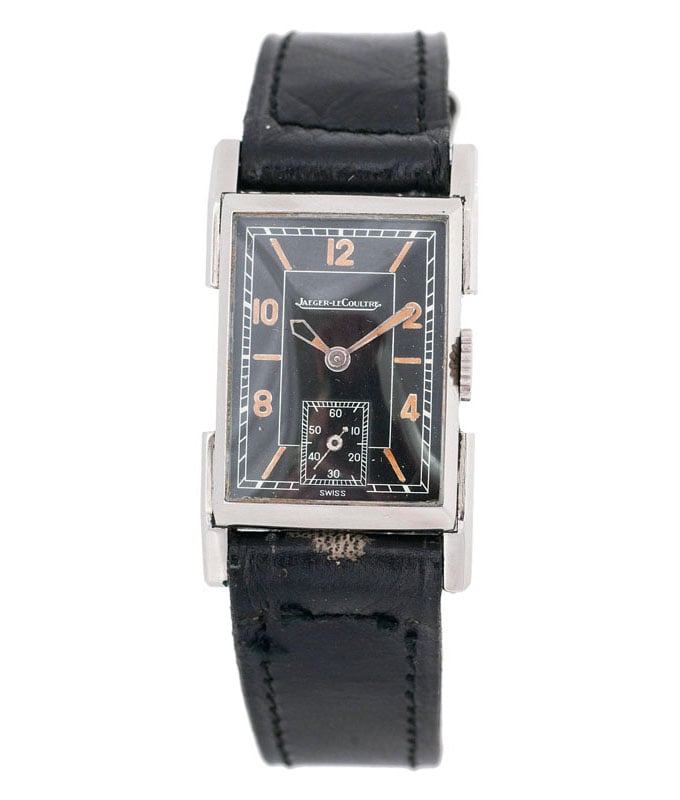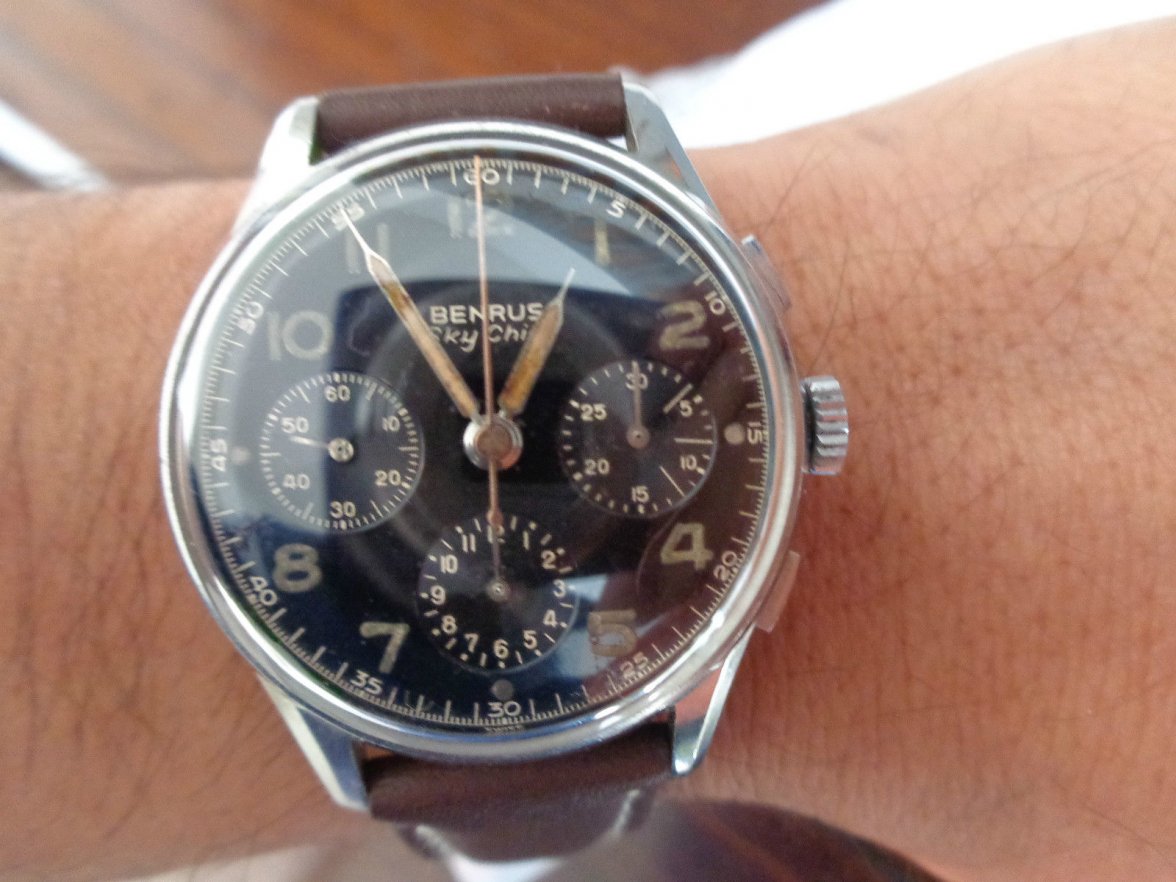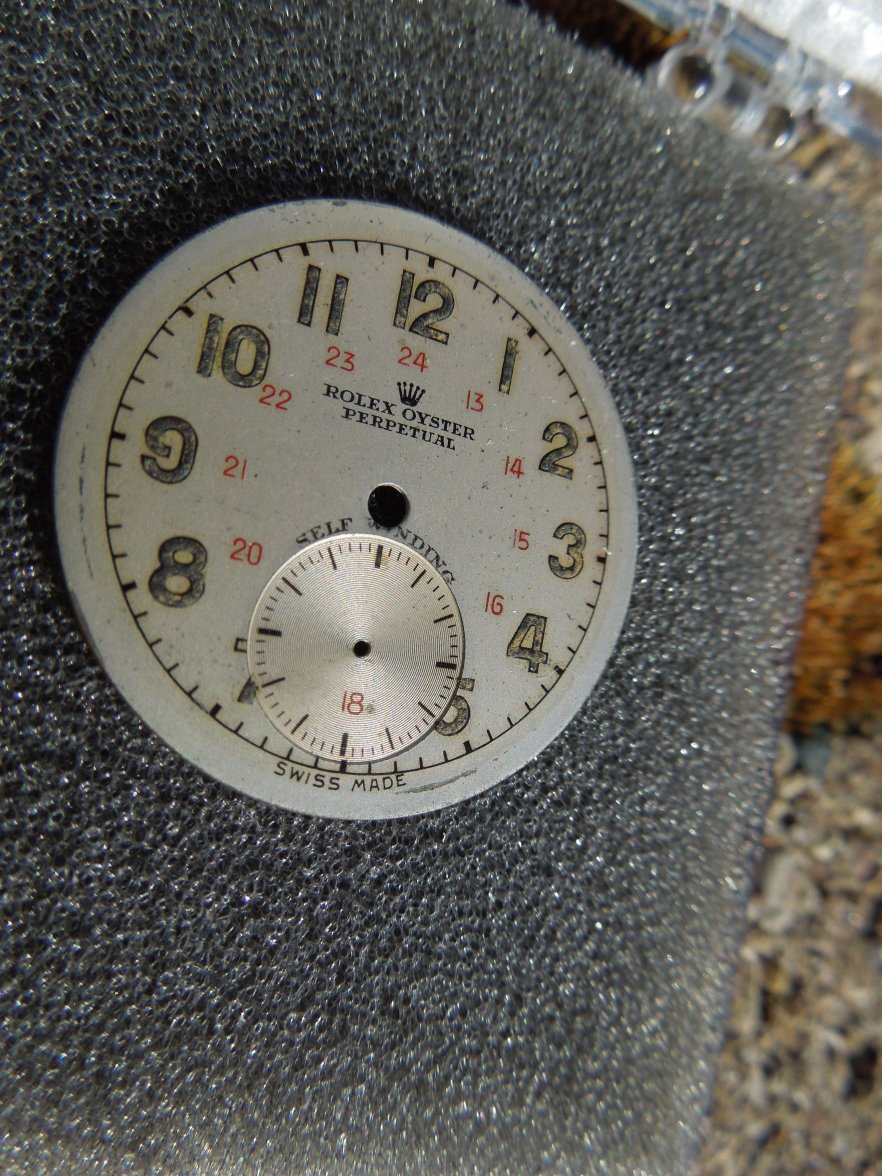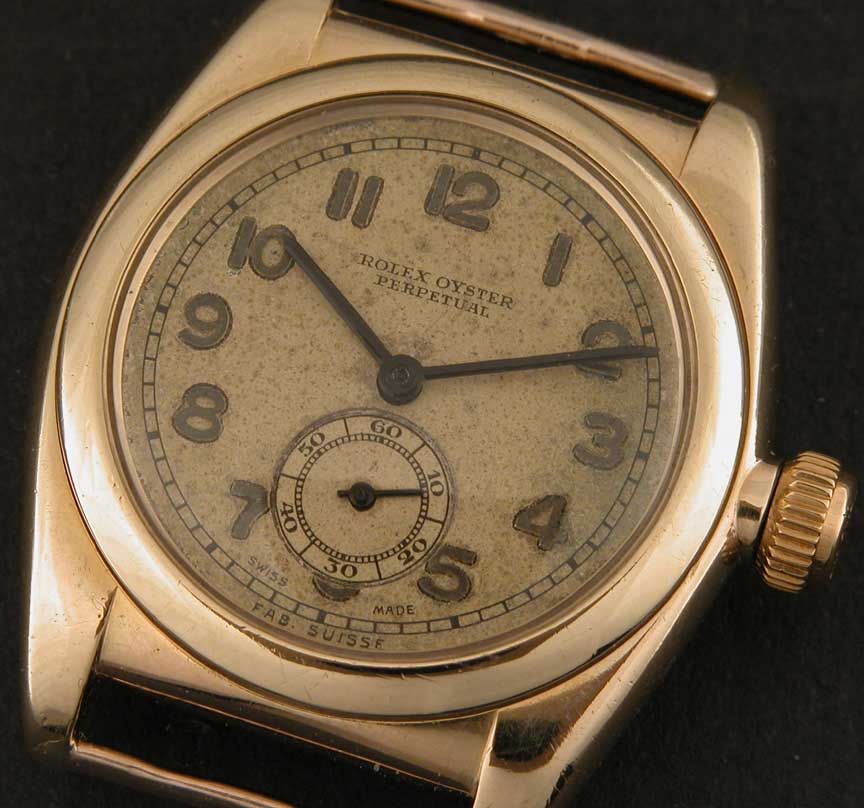do you think this could be a real JLC 1930s dial ?
pitpro
·I'd say refinished
- Posts
- 25,980
- Likes
- 27,689
ulackfocus
·Probably a refinished dial. There are quite a few redialers who have a JLC die or two.
Xtof
·In my humble opinion, the dial is original, end of 1930s or 1940s. Not suspicious for me.
Nice Uniplan!
Nice Uniplan!
pitpro
·Xtof
·In one case, I see dirt. Whereas in the other case, I see rust.
In both cases, dial and hands are matching in term of condition.
Concerning the Uniplan, it may (or not) be a replacement dial, but I am convinced it is not a refinished dial. Too many details are OK.
By the way, although rusty, the Lecoultre watch that you just show is very interesting, in particular if it still comes with its 2 "interchangeable frames" ( one in gold and the other in steel )
In both cases, dial and hands are matching in term of condition.
Concerning the Uniplan, it may (or not) be a replacement dial, but I am convinced it is not a refinished dial. Too many details are OK.
By the way, although rusty, the Lecoultre watch that you just show is very interesting, in particular if it still comes with its 2 "interchangeable frames" ( one in gold and the other in steel )
pitpro
·Minute track different.
SWISS different.
Zero degradation in color or dirt in OP's
Plots look like radium degraded
in the one I posted. Matching repainted tritium
in the OP's. If it was dirt on inside edge(I don't think
it is) none went on the dial. Not likely.
SWISS different.
Zero degradation in color or dirt in OP's
Plots look like radium degraded
in the one I posted. Matching repainted tritium
in the OP's. If it was dirt on inside edge(I don't think
it is) none went on the dial. Not likely.
- Posts
- 25,980
- Likes
- 27,689
ulackfocus
·I
In both cases, dial and hands are matching in term of condition.
Watchmakers can add coffee, tea, or similar foreign liquids to lume mix to make it appear aged.
Matching repainted tritium in the OP's.
Exactly.
JLC can redial a watch with the exact fonts used back when it was new. So can a LOT of redialers. The problem isn't the font of Jaeger LeCoultre, the issue is with the other parts of the printing as mentioned by John:
Minute track different.
SWISS different.
I still vote redial, just a pretty good one. I've seen - and own - very nice JLC redials.
Xtof
·On my side, I have never seen nice redials for this kind of dials. They are more complex to be refinished than the dial of the 2285, which has flat inking/printing, no tritum, no printed minute track.
And even for the 2285, JLC can do mistakes with the redial, such as "T swiss made T" sometimes printed although no tritium, an overdone sunbrushed finish or a too short cross hair.
It can be easier to find NOS dials. There are still places in Paris or in Geneva where these dials, which were produced untill end 40s, can be found, individually packed in a paper that has slightly burnt over each radium index.
Last but not least, I propose another benchmark for the OP's dial, not the one from the "interchangeable" model with its Lecoultre name.
SWISS and minute or second tracks look OK, don't they?
http://www.artcurial.com/fr/asp/fullCatalogue.asp?salelot=1990 450 &refno=10365324
And even for the 2285, JLC can do mistakes with the redial, such as "T swiss made T" sometimes printed although no tritium, an overdone sunbrushed finish or a too short cross hair.
It can be easier to find NOS dials. There are still places in Paris or in Geneva where these dials, which were produced untill end 40s, can be found, individually packed in a paper that has slightly burnt over each radium index.
Last but not least, I propose another benchmark for the OP's dial, not the one from the "interchangeable" model with its Lecoultre name.
SWISS and minute or second tracks look OK, don't they?
http://www.artcurial.com/fr/asp/fullCatalogue.asp?salelot=1990 450 &refno=10365324
pitpro
·On my side, I have never seen nice redials for this kind of dials. They are more complex to be refinished than the dial of the 2285, which has flat inking/printing, no tritum, no printed minute track.
And even for the 2285, JLC can do mistakes with the redial, such as "T swiss made T" sometimes printed although no tritium, an overdone sunbrushed finish or a too short cross hair.
It can be easier to find NOS dials. There are still places in Paris or in Geneva where these dials, which were produced untill end 40s, can be found, individually packed in a paper that has slightly burnt over each radium index.
Last but not least, I propose another benchmark for the OP's dial, not the one from the "interchangeable" model with its Lecoultre name.
SWISS and minute or second tracks look OK, don't they?
http://www.artcurial.com/fr/asp/fullCatalogue.asp?salelot=1990 450 &refno=10365324
It says 1946. I have not studied these watches like it sounds
you have. Is the OP"S watch 1930's? My problem with the
OP's watch is twofold. All that dirt(rust) on the inside rim of the
watchcase, right next to the dial, and no degradation of the dial.
That makes my thinking jaded as to the originality of the watch.
Second problem I have is the color and consistency of the fill
on the numbers and markers. It is mono-tonal and looks like tritium
or aged re-lume compound. Untouched Radium dial from the 1930's 1940's, to me,
should be grayish, like the one above I posted. Here are some examples:
1940's Benrus SkyChief
Dial for 1940 Rolex Bubbleback
Rolex 2940 dial
Earliest know Bubbleback in exsistence #29546 (~1932 if I remember)






